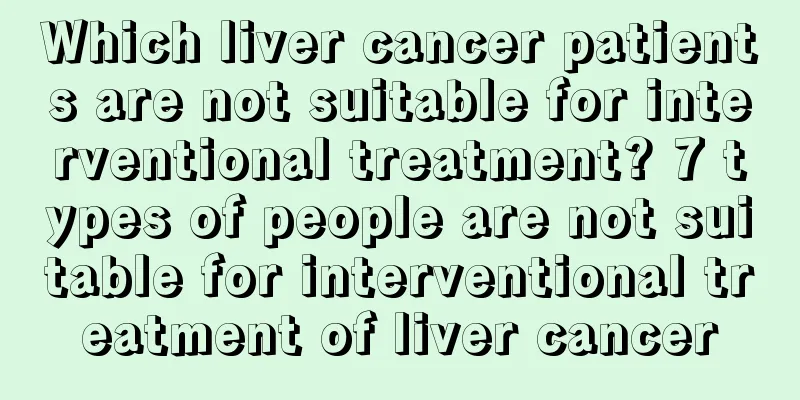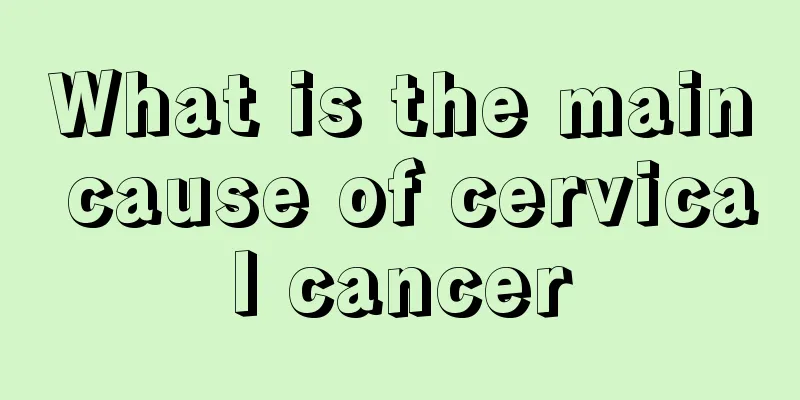Which liver cancer patients are not suitable for interventional treatment? 7 types of people are not suitable for interventional treatment of liver cancer

|
Interventional treatment of liver cancer is to introduce special puncture needles, catheters, guidewires, balloon stents, drainage tubes and other precision instruments into the human body under the guidance of medical imaging equipment to diagnose and locally treat some liver diseases. Interventional therapy is currently the most effective and commonly used treatment method for patients who cannot undergo surgical resection of liver cancer. Interventional therapy can be roughly divided into two types according to the approach, one is vascular intervention and the other is non-vascular intervention. Vascular intervention is the most commonly used treatment method. Liver cancer has a very rich and single blood supply. Embolization therapy for liver cancer patients can occlude tumor blood vessels, shrink tumor blood vessels, and cut off the tumor's nutritional source to achieve the purpose of treatment. However, not all patients with primary liver cancer can undergo interventional treatment. They are mainly the following five groups: 1. Severe liver dysfunction Child-Pugh grade C.; 2. Severe and uncorrectable decrease in coagulation function; 3. The main trunk of the portal vein is completely embolized by the cancer thrombus, and few collateral vessels are formed; 4. Patients with active infection who cannot be treated simultaneously; 5. Patients with extensive distant metastasis of the tumor and estimated survival period of less than 3 months; 6. Patients with cachexia or multiple organ failure; 7. The tumor accounts for ≥70% of the whole liver; if the liver function is basically normal, a small amount of iodized oil emulsion can be considered for embolization in batches; 8. Peripheral blood leukocytes and platelets decreased significantly, leukocytes <3.0×109/L |
>>: What are the symptoms of advanced lung cancer? Four common symptoms of advanced lung cancer
Recommend
The benefits of sunbathing to people and the best time
When the weather is warm, my mother likes to bask...
Are training pants okay to wear?
Most of the current hot spots focus on sports. Be...
Experts explain the genetic factors in the cause of kidney cancer
Kidney cancer is a very common disease in life, a...
Thyroid cancer patients cannot use skin care products
Thyroid cancer patients can use skin care product...
What causes angry hiccups?
In daily life, we often encounter things that mak...
Is it good to fumigate the room with white vinegar?
White vinegar is not only a condiment in the kitc...
Can nasopharyngeal endoscopy detect laryngeal cancer?
Can nasopharyngeal laryngoscope detect laryngeal ...
What foods can help white hair turn black?
Having white hair on your head is not necessarily...
Does the pus on the face need anti-inflammatory treatment?
I believe that many people do not want to have di...
Why is my tongue a little numb?
The tongue is the most important taste organ in t...
How to fry tofu without getting mushy and without sticking to the pan?
Tofu is a very common soy product. Proper consump...
What causes orbital bone pain
Sometimes, people may feel pain in the bones abov...
National subsidy policy for having children
With the relaxation of the country's two-chil...
Anti-inflammatory ointment for burns and blistering
Burns are something we often encounter in our liv...
Why does my left eye keep twitching
In daily life, people often encounter the situati...









